Where Cary Shopped Before It Changed Forever
For anyone living in Cary between the 1980s and early 2000s, Cary Towne Center wasn't optional. It was the default. The place where kids lined up for Sbarro slices after school. Where Belk bags piled up in car trunks by the hour.
What things to do in Cary, North Carolina, used to mean walking that mall loop with someone and seeing who you ran into.
It opened in 1979. Closed in 2021. Torn down in 2022. Since then, plans for its future have sat idle, stuck somewhere between corporate ambition and local zoning files. But before the site was just a memory, it was first a battleground, literally, politically, and economically.
The mall's story didn't start with construction. It started with conflict, neighbors, and more than one frustrated developer.
Retail Starts With Zoning
The first plans for what became Cary Towne Center appeared in 1972 under the name Cary Village Mall.
The project was pitched as part of a larger 78-acre concept called Village Center.
Developers Seby Jones and J.W. York, already behind other shopping centers like Crabtree Valley Mall and Cameron Village, proposed a blend of retail, office buildings, and even a motel.
From the beginning, it was contentious.
Residents organized under the name "Citizens for the Better Direction of Cary" and pushed back against rezoning.
They cited proximity to nearby schools, Cary High School, Henry Adams, and East Cary, and raised concerns about traffic.
The group hired an attorney, attended town council meetings, and slowed the process.
York publicly complained that every detail had to be signed off "10 times."
Despite resistance, the mall won its rezoning.
Construction took over the eastern portion of the parcel, while office buildings filled the center, and two open-air retail strips were placed along Cary Towne Boulevard.
The layout wasn't purely aesthetic. It followed the logic of traffic flow and remaining buildable land.
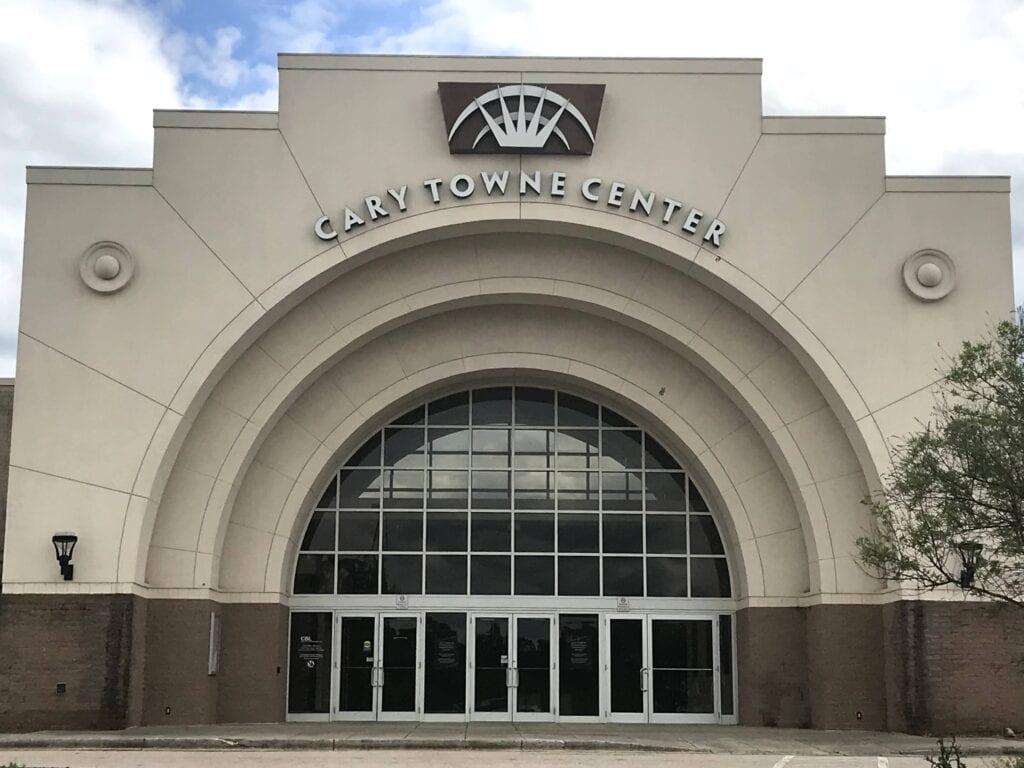
The Pinwheel and the Oak
Cary Village Mall opened its doors on February 21, 1979, with 325,000 square feet of enclosed retail space and a layout that felt engineered for foot traffic and planned growth.
At its core was a sunken, triangular food court surrounded by a pinwheel configuration of four wings.
Three of those stretched toward the main roads around the property.
The fourth pointed to unused land in the rear, left open for possible expansion.
Anchor tenants at the launch were Ivey's, Hudson Belk, and adjacent Big Star Markets.
Ivey's would later become Dillard's. Hudson Belk would simply become Belk.
The outbuildings included Harris Teeter and smaller retail strips that fed traffic toward the main mall entrance.
One feature stuck out early: a Southern Red Oak near the rear lot that developers kept intact.
It cost time and money to preserve. They built a terrace around it and left it as a planted centerpiece.
For a few years, it worked. Shoppers parked near it. Parents pointed it out to the kids.
Then it died. The terrace was removed, and the space was turned into parking.
That choice, preserve, invest, then repurpose, would repeat across the property in different forms for decades.
Growth on Paper, Palm Trees in Center Court
In 1988, the owners of Cary Village Mall secured a rezoning change to allow a major expansion.
They had reasons to hurry. A proposed mega-mall at Crossroads Plaza, roughly a mile away, had started drawing interest.
By 1991, the expansion was complete.
The renamed Cary Towne Center now covered 1.1 million square feet and included three new anchors: Sears, JCPenney, and Thalhimers.
Alongside those deals came aesthetic changes. A food court was added near the site of the old oak. Palm trees went into Center Court.
The language of the redesign followed a national trend: malls that functioned like indoor town squares, with visible lighting upgrades, bench seating, and open gathering areas.
Ownership also shifted. The Richard E. Jacobs Group, already managing multiple regional properties, took over operations.
They brought scale and leasing consistency but didn't alter the development strategy.
In 1992, Dillard's moved into a larger building just next to its original location.
The older space was carved into inline shops. That same year, Thalhimers was renamed Hecht's.
Hecht's was later rebranded again in 2006, this time as Macy's.
Every change made sense on paper. Every move reflected the logic of expansion.
But traffic patterns were starting to shift. The Crossroads Mall had opened (but down to 630,000 sq ft).
And new malls don't compete quietly.
In 2001, CBL & Associates Properties acquired the mall through a bundled deal that included 21 properties spread across nine states.

Tenant Swaps and Lease Departures
In November 2013, Dave & Buster's opened inside Cary Towne Center.
It wasn't just a tenant change, it marked a shift in what the mall was trying to be.
A few months later, Harris Teeter relocated out of its original footprint.
Jumpstreet moved in shortly after, converting the grocery store's old space into an indoor trampoline park and party rental zone.
But the rest of the deck started collapsing. Sears closed in January 2015.
That space was filled in May 2016 by Cary Towne Furniture, a regional store that branded itself as the largest of its kind in the area.
It didn't last a year. By December, the space was empty again.
Macy's shut down in early 2016. Their public statement pointed to weak sales and earnings.
JCPenney followed, announcing on January 31, 2019, that its Cary location would close by May 3.
That one was part of a broader corporate plan to shut down 27 stores nationwide.
Dillard's filed its closure notice on July 12, 2019.
That left Belk standing alone among the anchors, but only technically.
By late 2019, the mall wasn't closing store by store, it was being vacated in blocks.
The shifts weren't seasonal or cyclical. They were structural.
Missed Deals and Repurchased Dirt
Early 2018 brought a moment of fresh momentum when IKEA announced plans for a 350,000-square-foot store on the former Macy's and Sears footprint.
For a short time, that announcement reset expectations.
A new anchor of that size suggested a new draw, new traffic, and a reason to overhaul the old floor plan.
But by May, the plan was off. IKEA reversed course, blaming broader shifts in retail strategy.
With the store gone, the math fell apart. CBL Properties, which had owned the mall since 2001, defaulted on its mortgage.
Turnbridge Equities and Denali Properties stepped in and acquired the property on January 31, 2019.
By October 2020, they introduced a new concept called Carolina Yards.
It wasn't another mall.
The proposal included 800 residential units, 600,000 square feet of office space, a 600-room hotel, and more open-air retail than had ever existed at the site.
This time, the pitch was built around flexibility, outdoor common areas, public events, and mixed zoning.
The old mall still stood during those talks, but the calendar had already shifted.
The buildings were shells. Only a few interior tenants remained. Carolina Yards didn't try to rescue what was left.
It was planned to replace it. Completely.

Corporate Buyout, Public Silence
Epic Games bought Cary Towne Center in January 2021 for $95 million.
The stated plan was clear enough: relocate the company's headquarters and build out a tech campus on the site.
That included office buildings, green space, and a loose commitment to public integration.
In announcements that followed, Epic described the project as a long-term move for its Cary operations.
By March 2022, demolition began. It was methodical and fast. Crews cleared the site through April.
The only thing left standing was the former Belk building, which somehow stayed out of the teardown list.
Dave & Buster's, still open at the time, relocated in January 2022 to an outparcel at 1111 Walnut Street.
That was the former Jumpstreet site, repurposed and reopened while the rest of the mall came down.
By the end of 2022, the mall was gone. However, the promised headquarters never materialized.
There was no ground-breaking event, no construction traffic.
What remained was 87 acres of cleared land owned by a global gaming company that had gone quiet about its intentions.
Paperwork Withdrawn, Fence Still Up
By January 2025, the Town of Cary took action.
With no movement from Epic Games on site development, the town formally withdrew the pending rezoning request.
That zoning file had sat untouched for more than three years.
Officials had waited, but by then, the deadline passed without updates, revisions, or public comment.
Epic gave no new estimates and released no public plans.
The project's first phase, which had been scheduled for 2024, didn't happen.
Axios Raleigh folded the empty lot into a broader list of paused Triangle developments.
Apple's local site, Downtown South in Raleigh, and others were facing similar holds.
Financing costs had climbed. Construction schedules had slipped. Ambitions got postponed.
As of 2025, the site at 1105 Walnut Street was unchanged.
The Belk structure remained unoccupied. There were no new permits on file. No work had resumed.
What was once one of the highest-foot-traffic properties in Cary now sat behind a fence, waiting.
The mixed-use dream had stalled. The tech campus hadn't started. And the paperwork trail had gone cold.
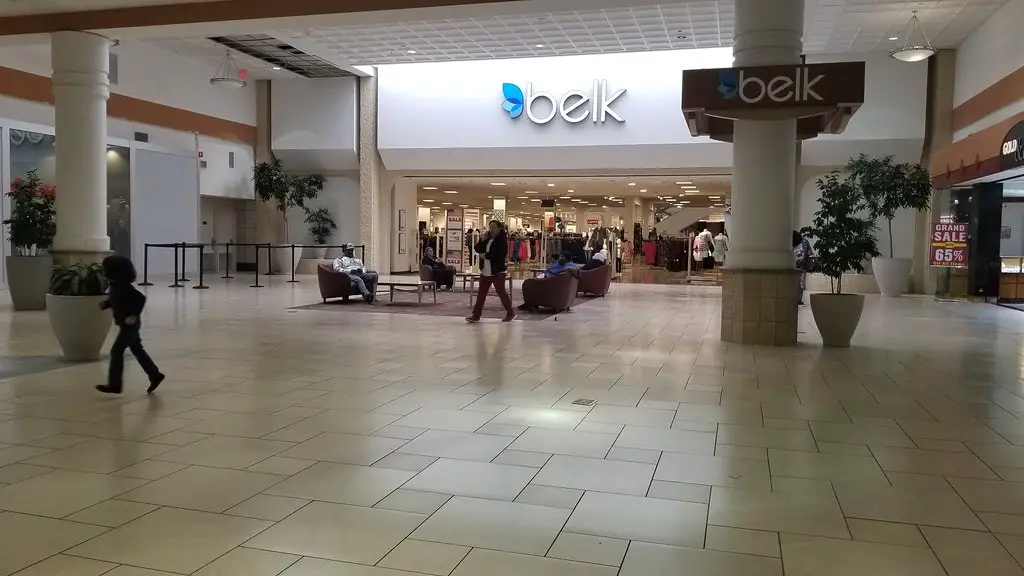
🍀


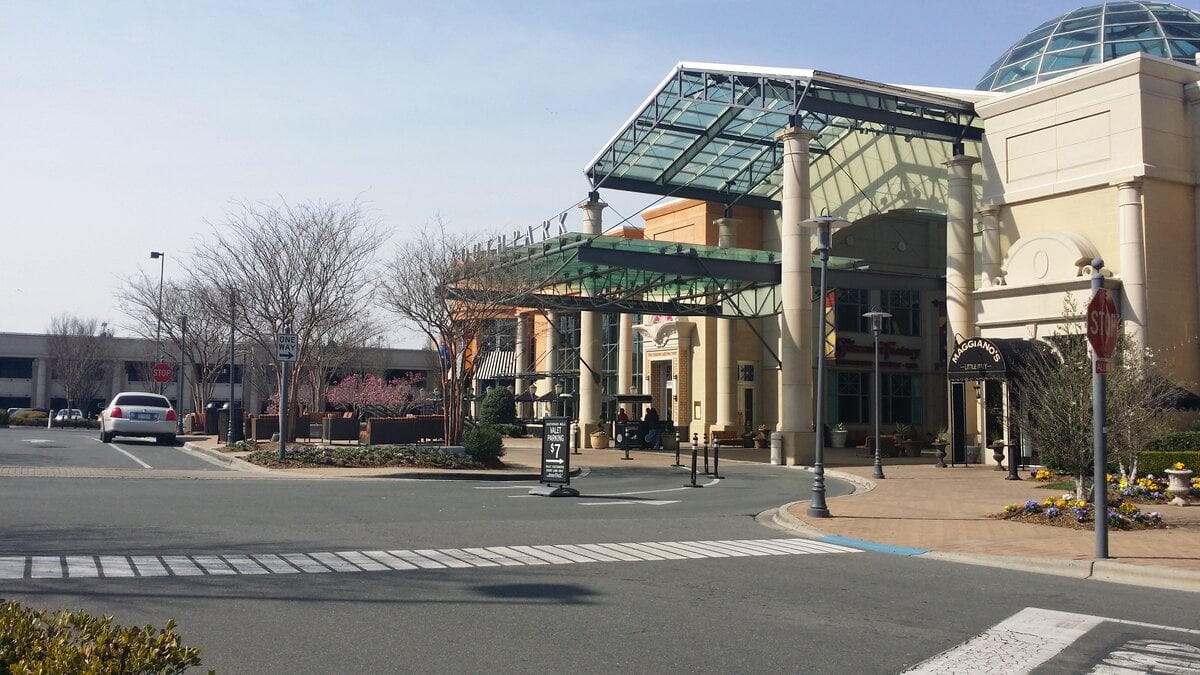


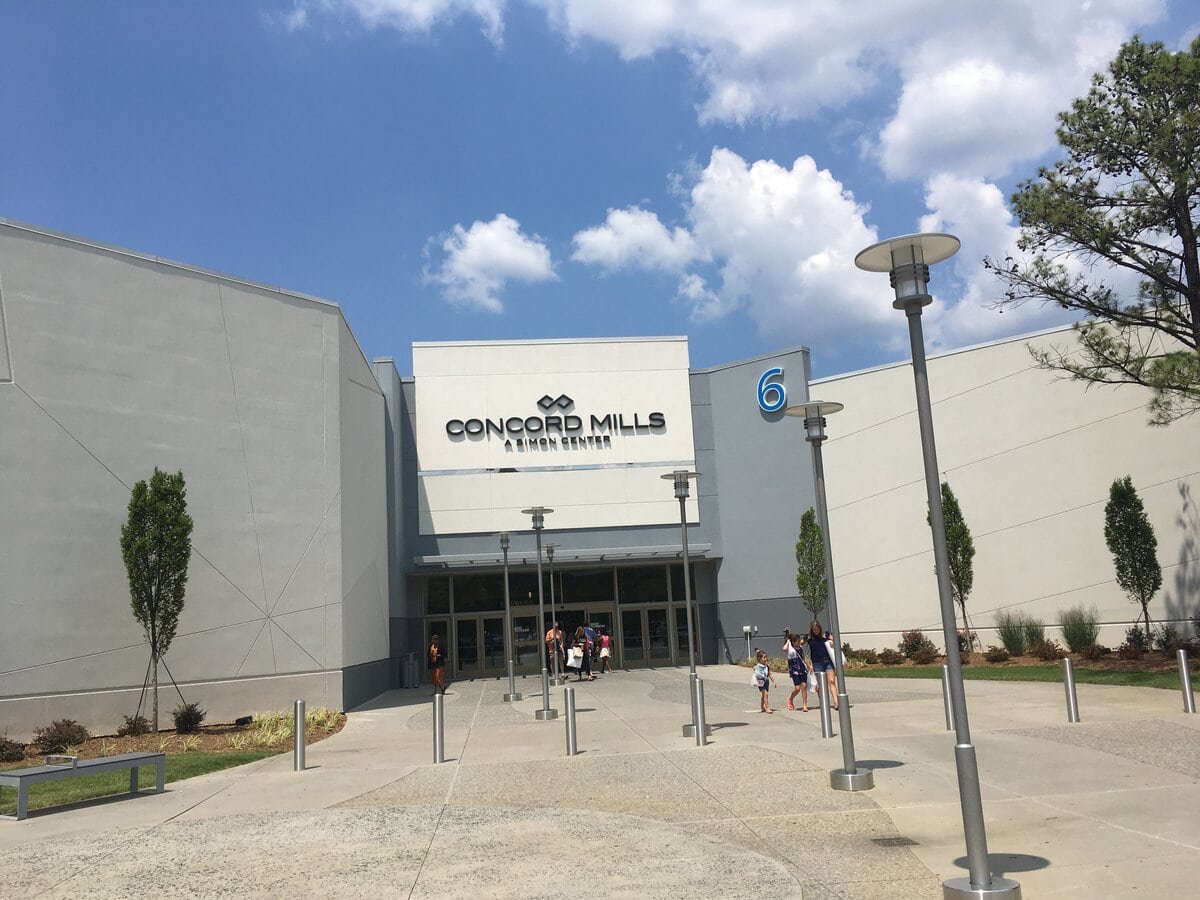
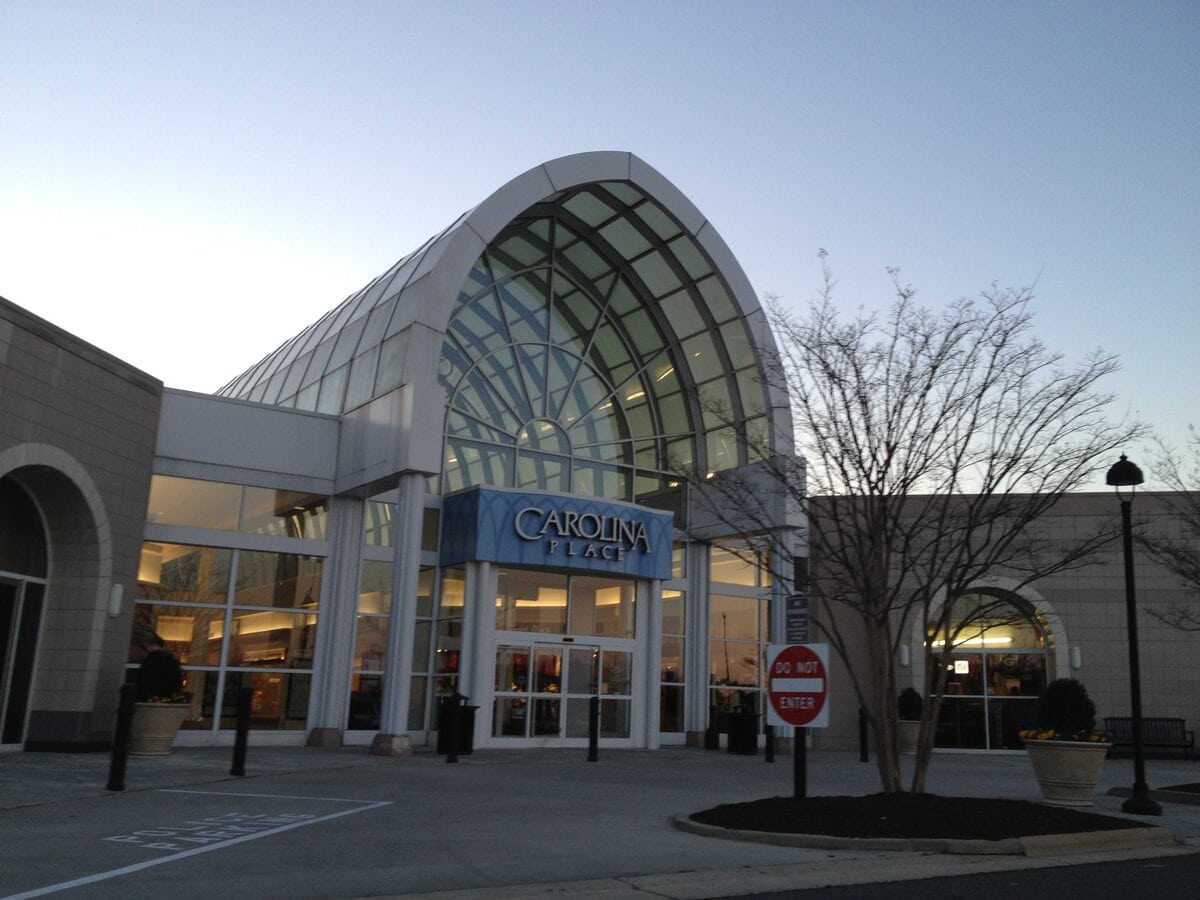
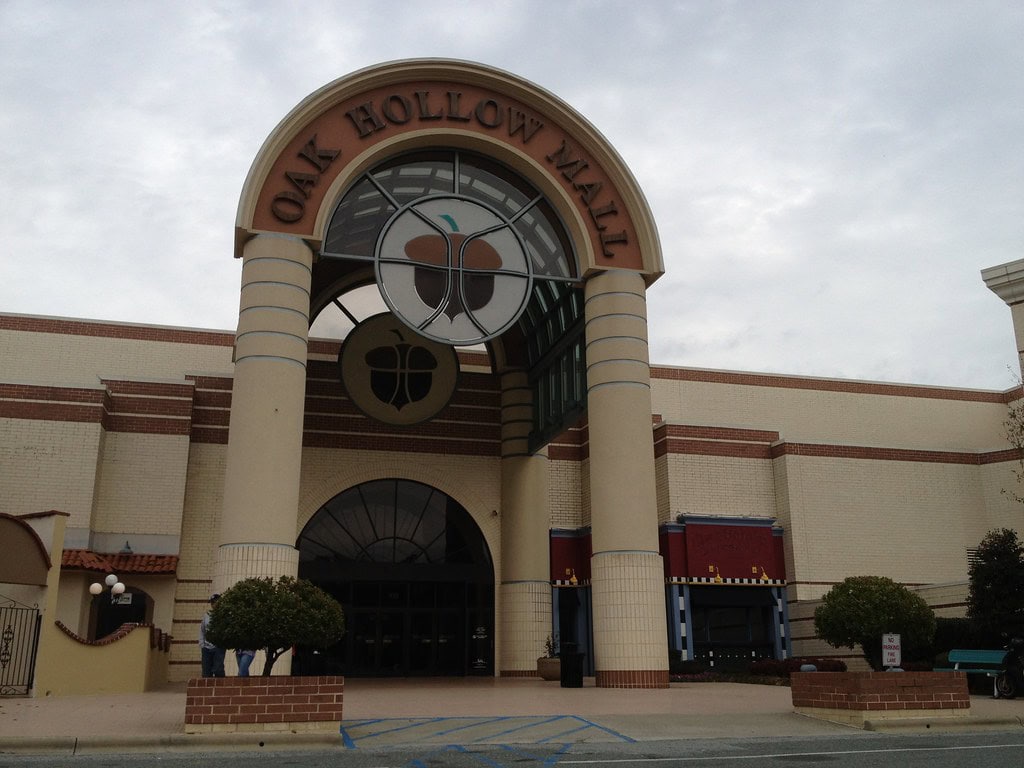

I miss this mall.
It's always sad when a beloved shopping center shuts down, especially if it holds sentimental value.
Very sad and disappointing to see these awesome shopping malls disappear. Bring them back please.
Your sentiment resonates with many who share fond memories of shopping malls like Cary Towne Center. By exploring innovative and engaging experiences, there's an opportunity to reestablish these malls as vibrant community hubs, meeting the needs of today's consumers.
Will anything ever happen to this space? I keep hearing about affordable housing and I have not seen it to date. Thanks
You're not alone in wondering. Announcements have outpaced action at this site, and the long pause has raised more questions than answers.
If only Cary Towne Center were still here! I loved shopping there for years, and have not enjoyed shopping in any other mall since then. It was just the right size and all on one level! As I have gotten older, of course, that means a lot!
So sorry that space still sits vacant.
Sandra Close
Sandra, thank you for writing. You captured what made that mall different: not flashy, but thoughtfully sized and accessible. That made it work well for a long time.
It seems Affordable Housing is the big "crying sound" for new hi rise bldgs. to be built in areas to close to residential properties. They add this to make this plan so wonderful for all of us. The Cary Towne Center properties would be a great place for many affordable homes to be built. Why not use it for this instead of pushing 5-7 story bldgs. in our back yards.
You're pointing to a question that's coming up across North Carolina: where is the right place for density? And what kind of housing serves the area without overwhelming it?